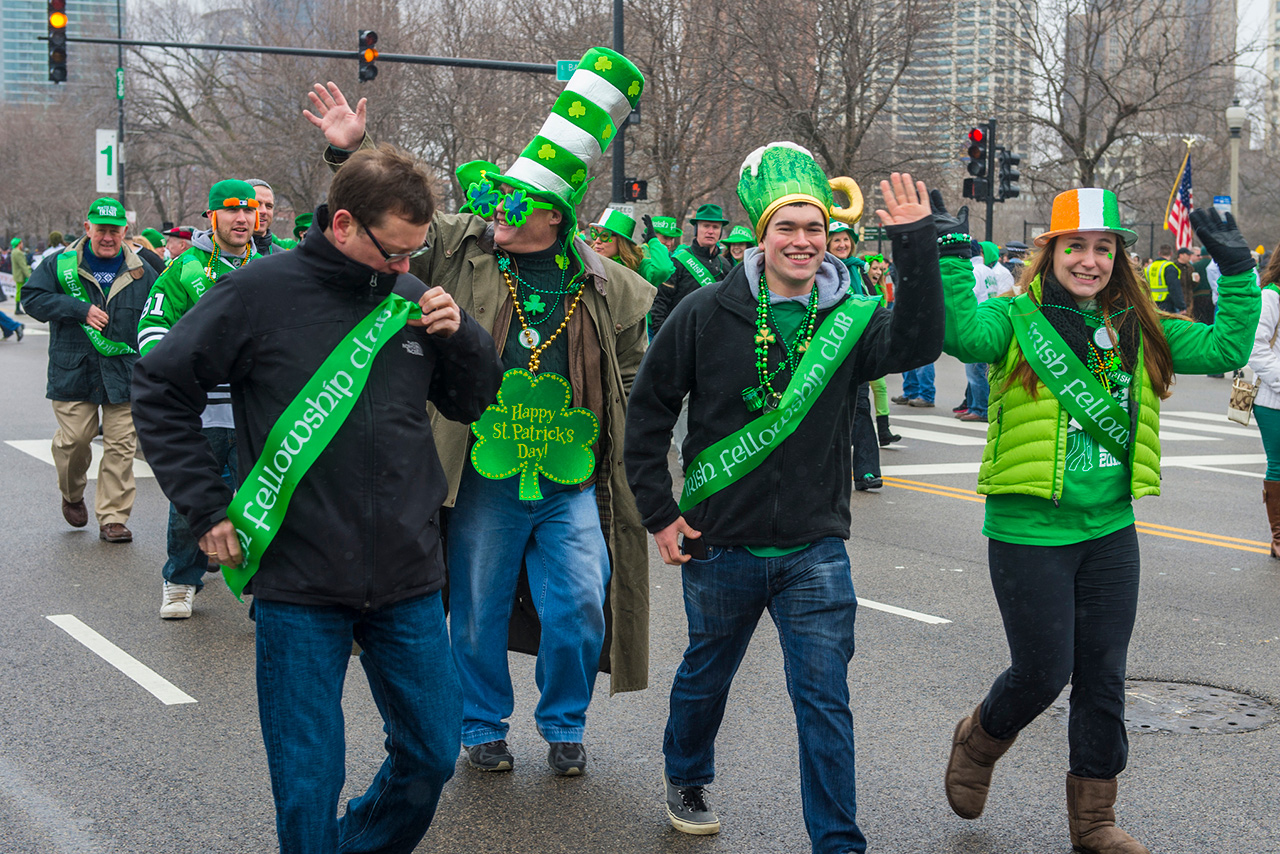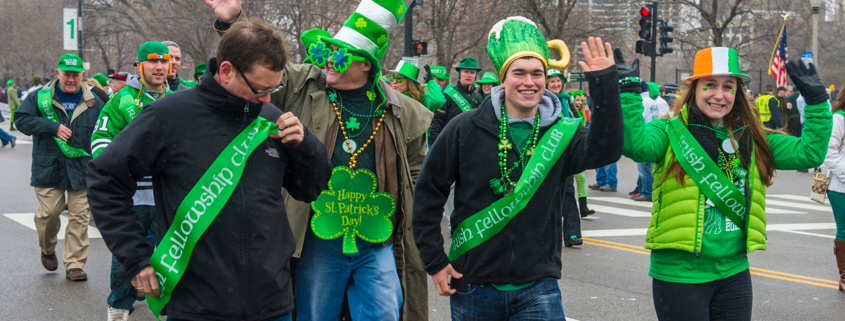Neighborhood News: It’s Not Easy Being Green—St. Patrick’s Day in Chicago

The history of St. Patrick’s Day in Chicago, according to Choose Chicago, goes back more than 175 years. From a blocks-long celebration over unpaved streets by Irish immigrants, it has grown to an international celebration attended by hundreds of thousands of Chicago natives and visitors annually.
Today, there are celebrations on every side of Chicago, from the South Side Irish Parade in Beverly to the Irish American Heritage Center near Albany Park, to the Northwest Side Irish Parade in Edison Park.
Who Was St. Patrick, Anyway?
Saint Patrick was a 5th-century Romano-British Christian missionary and Bishop in Ireland, according to Wikipedia sources. At age sixteen, he was kidnapped by Irish raiders and taken as a slave to Gaelic Ireland. He spent six years there working as a shepherd and found God, who told Patrick to flee to the coast, where a ship would be waiting to take him home. After making his way home, Patrick became a priest, and returned to Ireland to convert the pagan Irish to Christianity. Saint Patrick is said to have used the shamrock, a three-leaved plant, to explain the Holy Trinity to the pagan Irish. While it’s commonly thought that Patrick drove the snakes out of Ireland, those ‘snakes’ may have been metaphorical. He died on March 17, and that’s why this date is celebrated annually.
The St. Patrick’s Day Parade in Chicago
According to the City Experiences website, the first St. Patrick’s Day parade took place in Chicago on March 17, 1843. Beginning on Clark Street, Grand Marshal, “Smiling John” Davlin led the first attendees down Michigan Avenue and into St. Mary’s Catholic Church for mass. The tradition continued until 1896, after which it suddenly ended for unknown reasons.
Modern-Day Phenomenon
In 1956, Mayor Richard J. Daleyresurrected the Loop’s St. Patrick’s Day parade with the intention of celebrating Chicago’s Irish heritage. Daley was the third consecutive Irish-American mayor in the city, having grown up in the working-class, heavily Irish-American South Side neighborhood of Bridgeport. His parents’ families had both arrived from Dungarvan, County Waterford, Ireland, during the Great Famine.
Today
Since 1956, the Downtown parade has been sponsored by the Chicago Plumbers Local 130 and The Chicago St. Patrick’s Day Parade Committee. The parade route follows Columbus Drive between Balbo Drive and Monroe, and has been led since 1956 by the famed Shannon Rovers Irish Pipe Band. Somewhere along the route will also be the annual appearance by the Trinity Academy of Irish Dance.
Dyeing the Chicago River
The dyeing of the Chicago River was added in 1962, quickly becoming one of Chicago’s most famous events, transforming the waterway into a shade of bright emerald (some say Kelly) green by ‘dumping’ 100 pounds of environmentally friendly dye into the Chicago River.
This year, dyeing the river starts at 10am. The best places to watch are along the Chicago Riverwalk (Wacker Drive, from Michigan to Clark) and on the bridges between State and Columbus. If you want a place, get there early!
Entry to the parade route opens at 11am for the 12:30pm parade, and entry is only permitted at Jackson Avenue and Ida B. Wells Drive (formerly Congress Blvd.) Coolers, alcohol, open beverages, camelbacks, and personal water bottles are not allowed along the route. However, your pets are! For more information about Chicago’s Downtown Parade, click here
Slainte!!!
Alison Moran-Powers and Dean’s Team Chicago

